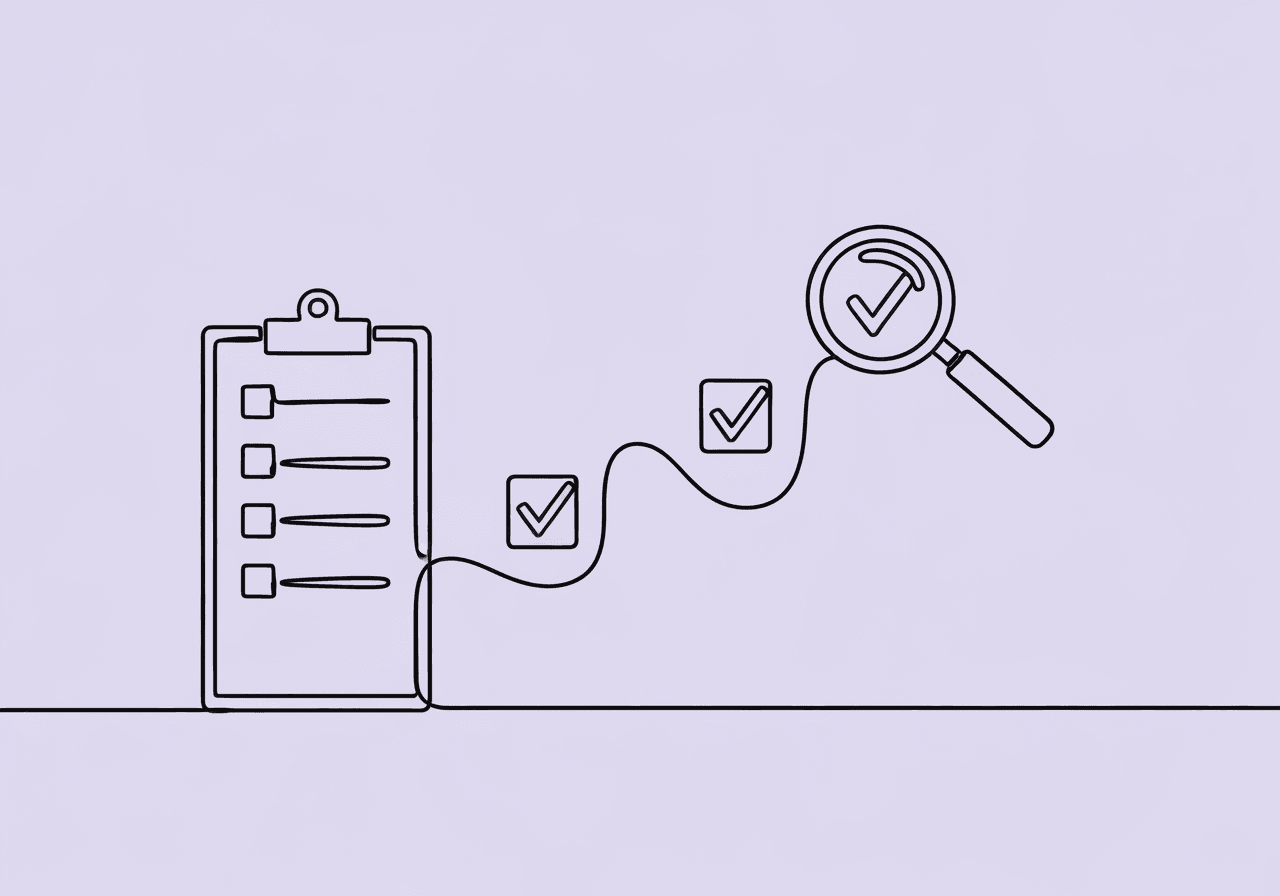RBT Documenting Client Assent: BACB 2.11 Guide

Key Takeaways on RBT Documenting Client Assent
- Daily notes on assent and preferences protect client rights and keep sessions engaging under BACB 2.11.
- Use a simple four-step method to log choices, behaviors, responses to dissent, and reinforcer effects.
- Templates in ABC format make documentation quick and objective, supporting better supervision.
- From a BCBA's angle, these logs spot trends for plan tweaks and boost treatment outcomes.
- Consistent practice builds trust, reduces ethical risks, and aligns with person-centered ABA.
Imagine starting a session with a young client who suddenly turns away from an activity, signaling discomfort. As an RBT, overlooking this could mean missing a chance to respect their voice, potentially harming trust and progress. RBT documenting client assent isn't just paperwork—it's a key part of ethical ABA practice that ensures client-centered care. Under the BACB Ethics Code, particularly section 2.11, RBTs must obtain and record assent to honor autonomy, especially for those unable to give full consent.
This guide breaks down your role in daily ethical documentation, explains why tracking assent and preferences drives compliance and outcomes, and offers a four-step method with practical templates. You'll also get insights from a BCBA viewpoint and best practices to streamline your notes. By the end, you'll feel equipped to document with confidence, supporting better therapy and supervision.
The RBT's Role in Ethical Documentation Under BACB 2.11
In your role as an RBT, you handle frontline duties in Applied Behavior Analysis (ABA), delivering interventions while upholding ethics. The BACB Ethics Code for Behavior Analysts (2022), section 2.11, mandates explaining, obtaining, reobtaining, and documenting informed consent, including client assent when applicable According to the Behavior Analyst Certification Board (2022). This involves observing and logging a client's willingness to participate, often through verbal or nonverbal cues.
Assent protects clients who can't provide full consent due to age or developmental stage, emphasizing dignity and autonomy. When working with clients, follow BCBA supervision and report any assent issues promptly. Skipping this risks ethical violations, but steady documentation creates a record of respectful practice.
The RBT Ethics Code (2.0) reinforces this by requiring adherence to professional standards during service delivery According to the Behavior Analyst Certification Board (2022). In daily sessions, note preferences and responses to ensure interventions match client choice.
Why Documenting Client Assent and Preference Daily Is Crucial
On the rules side, logging client assent and client preference in ABA notes safeguards client rights and boosts therapy effectiveness. Assent—a client's indication of willingness—must be respected, as withdrawal signals the need to pause or adjust activities According to Key Autism Services (2023). Without daily logs, you might miss patterns, leading to coercive practices that erode trust.
RBT ethics documentation under BACB 2.11 helps prevent violations during audits or reviews Ethics Code for Behavior Analysts - BACB. It shows that therapy prioritizes autonomy, reducing coercion risks and supporting legal standards Assent in applied behaviour analysis and positive behaviour support. Tracking preferences also informs reinforcer selection, making sessions more engaging The Effect of Assent-Based Care in ABA Therapy | Centria Autism.
Take this example: assent-focused notes improve collaboration between RBTs, BCBAs, and families The Importance of Assent in ABA Therapy - TherapyWorks. In the end, this builds positive relationships and adjusts plans on time, leading to better outcomes Assent in applied behaviour analysis and positive behaviour support. It shifts ABA from rigid protocols to person-centered care.
For deeper tips on general ABA documentation best practices for RBTs, check our guide on essential tips for session notes.
A Four-Step Method for RBT Documenting Client Assent and Dissent
When working with clients, simplify RBT documenting client assent with a structured four-step process, based on BACB guidelines and preference assessment standards. This approach ensures comprehensive, ethical notes while linking to core skills like RBT Task List B-1.
Step one involves a Preference Check Documentation. Kick off sessions by offering choices, such as two activities, and note selections. This ties into conducting preference assessments, where you identify reinforcers through observation According to the Behavior Analyst Certification Board RBT Handbook (2025). For instance, log: "Client chose puzzle over blocks via pointing."
Next up, tackle Behavior/Communication Logging. During the session, record verbal or nonverbal cues showing assent or dissent. Smiling engagement points to assent; turning away indicates dissent. Apply the ABC format—antecedent, behavior, consequence—for clear records.
Don't forget the third part: Response to Dissent Documentation. If dissent happens, pause the activity and document the response, like offering an alternative. This honors withdrawal and avoids escalation, as highlighted in ethical codes.
Wrap up with the Reinforcer Effectiveness Log. Track how preferences affect motivation, noting if chosen items keep engagement high. Review these weekly with your BCBA to fine-tune plans.
Learn more about preference checks in our post on mastering RBT B-1 preference assessments.
Practical Templates for Documenting Client Assent
You need quick, reliable ways to capture client preference in ABA notes. These evidence-based templates, adapted from BACB-compliant practices, promote objectivity and detail. Here's what happened in each scenario: Before the activity, the client..., the client..., so we...
| Template Type | Example Entry |
|---|---|
| Client Choice (assent via preference) | Date/Time: [Insert]. Activity: [Describe]. Antecedent: Offered choices A (toy car) and B (book). Behavior: Client reached for and engaged with toy car for 5 minutes, smiling. Consequence: Continued session with choice; high engagement noted. Assent: Yes, via selection. <br> This quantifies participation for data-driven adjustments. |
| Withdrawal of Assent (dissent documentation) | Date/Time: [Insert]. Activity: [e.g., Discrete trial training]. Antecedent: Prompted for task repetition. Behavior: Client pushed materials away, vocalized 'no,' and averted gaze. Consequence: Paused activity, offered break with preferred item (sticker). Response: Client calmed after 2 minutes; resumed with alternative task. Dissent: Documented and respected. <br> It highlights ethical response, preventing force. |
| Successful Reinforcement | Date/Time: [Insert]. Target: [e.g., Manding skill]. Antecedent: Client requested item. Behavior: Used word 'ball' independently. Consequence: Delivered preferred ball; client engaged for 10 trials. Effectiveness: Preference maintained motivation; 80% success rate. <br> Tie this to reinforcer logs for progress tracking. |
Explore BACB-aligned strategies in our article on ABA client assent documentation ethics.
BCBA Perspective: How This Documentation Improves Supervision and Treatment Efficacy
From a BCBA's view, strong RBT documenting client assent turns supervision into a collaborative powerhouse. Detailed notes reveal patterns in assent withdrawal, helping BCBAs revise behavior plans proactively. For instance, frequent dissent during certain tasks might indicate fading prompts too quickly, enabling targeted tweaks According to Behavioral Innovations (2023).
This documentation boosts treatment efficacy by matching interventions to client preferences, increasing engagement and generalization The Effect of Assent-Based Care in ABA Therapy | Centria Autism. BCBAs use logs to train RBTs on assent cues, cutting errors and building team consistency. It also supports family involvement, as shared notes foster transparency Guide for BCBAs: Documenting Client Assent & Dissent | Praxis Notes.
In the end, it streamlines oversight, with BCBAs spotting trends via reinforcer effectiveness data How We Use Assent-Based Practices in ABA Therapy. This leads to measurable progress, fewer ethical hurdles, and empowered RBTs. For BCBA-focused insights, see our guide on ABA client assent documentation for BCBAs.
Summary of Documentation Best Practices for RBTs
Put these RBT ethics documentation best practices into action to meet BACB 2.11 and elevate your sessions. You've got to stay objective: Stick to observable facts, avoiding interpretations like "client seemed happy"—instead, note "client smiled and initiated play."
Keep notes concise yet comprehensive, using quantifiable data where possible. Integrate assent checks into every session start, and review with your BCBA monthly. Use digital tools for HIPAA compliance to track preferences over time.
Prioritize ongoing training on nonverbal cues, as assent often shows through actions. This not only ensures compliance but also promotes client dignity. For goal-setting ties, reference our resource on RBT SMART goal writing.
Frequently Asked Questions
How do you document client assent in ABA therapy?
Document client assent by noting observable verbal or nonverbal indicators of willingness, such as nodding or engaging with materials. Use ABC format in session notes to capture context, and always respect withdrawal by pausing activities. As the BACB notes in their 2022 Ethics Code section 2.11, this includes reobtaining assent as needed for ethical practice Behavior Analyst Certification Board (2022).
What are the key differences between informed consent and client assent?
Informed consent comes from guardians or adults with capacity, granting formal approval for treatment. Client assent is the ongoing, often nonverbal agreement from the client themselves, especially children or those with impairments. The BACB distinguishes them to ensure autonomy, with assent required "when applicable" under section 2.11, as explained in resources like Pass the Big ABA Exam (2023).
How often should client assent be reobtained in ABA therapy?
Reobtain assent at the start of each session and during transitions, or whenever cues suggest discomfort. Continuous monitoring prevents coercion, aligning with person-centered ABA. Practices suggest checking multiple times per session for young clients According to Key Autism Services (2023).
What are the consequences of not obtaining client assent in ABA?
Neglecting assent can lead to ethical violations, damaged trust, and ineffective therapy, as clients may disengage or resent interventions. It risks BACB sanctions and legal issues during reviews. Documenting it protects all parties and supports better outcomes, per insights from TherapyWorks (2023).
How can RBTs ensure they are respecting client autonomy through assent?
RBTs respect autonomy by pausing on dissent cues, offering choices, and logging responses accurately. Train on recognizing nonverbal signals and consult BCBAs for guidance. This builds collaborative therapy while meeting BACB 2.11 standards, as outlined by Bierman Autism Centers (2023).
Mastering RBT documenting client assent empowers you to deliver ethical, effective ABA that honors every client's voice. Through BACB 2.11 compliance, daily logs of preferences and responses not only meet standards but also drive meaningful progress and stronger supervision.
Next steps include reviewing your current notes for assent details, practicing the four-step method in your upcoming sessions, and discussing templates with your BCBA for customization. These actions will enhance client trust and your professional growth. At Praxis Notes, we're here to support your documentation journey with tools like AI-powered templates—explore how they can simplify your workflow today.
Popular in Compliance & HIPAA
- 1
ABA Documentation Checklist: RBT Compliance Guide 2025
5279 min read - 2
BCBA Procedural Fidelity Checklist: Essential H-6 Guide
4856 min read - 3
RBT Renewal Competency Documentation Guide for BCBAs
3616 min read - 4
BCBA Ethical Documentation Best Practices
3496 min read - 5
RBT Supervision Log Audit Checklist for BCBAs
2886 min read
Popular in Compliance & HIPAA
- 1
ABA Documentation Checklist: RBT Compliance Guide 2025
5279 min read - 2
BCBA Procedural Fidelity Checklist: Essential H-6 Guide
4856 min read - 3
RBT Renewal Competency Documentation Guide for BCBAs
3616 min read - 4
BCBA Ethical Documentation Best Practices
3496 min read - 5
RBT Supervision Log Audit Checklist for BCBAs
2886 min read
Related Resources
Explore more helpful content on similar topics

BCBA Procedural Fidelity Checklist: Essential H-6 Guide
Master RBT supervision with the essential BCBA procedural fidelity checklist guide. Learn BACB H-6 compliant steps to create checklists, monitor sessions, calculate integrity data, and document corrective actions for optimal treatment fidelity.

RBT Field Manual BCBA: Ultimate Supervision Guide
Discover how to create an effective RBT field manual BCBA for seamless supervision and compliance. This step-by-step guide covers ethics, documentation systems, crisis procedures, and BACB standards to boost your ABA practice efficiency and audit readiness.

RBT Renewal Competency Documentation Guide for BCBAs
Master RBT renewal competency documentation as a BCBA with this expert guide. Learn the 45-day rule, BACB forms, attestation processes, and 7-year retention for audit-proof compliance and seamless renewals.